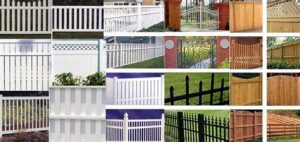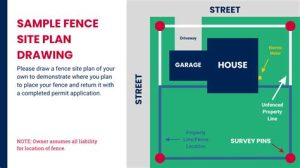Discover essential tips on budgeting, material selection, design choices, property measurement, and hiring a contractor for your project success.Installing a fence can enhance both the aesthetic appeal and security of your property, but planning the project can feel overwhelming. Whether you’re a DIY enthusiast or considering hiring a professional, understanding the steps involved is crucial to ensure a successful installation. In this blog post, we will guide you through the key aspects of planning your fence installation project, from setting a budget that works for you to selecting the perfect materials and design. We’ll also cover how to accurately measure and mark your property to avoid any mishaps, as well as tips on hiring a skilled contractor if you decide to go that route. With the right preparation and knowledge, you can transform your outdoor space while staying within your desired parameters. Let’s dive in!
Setting Your Budget
When embarking on your fence installation project, one of the first and most crucial steps is setting your budget. A well-defined budget will guide you throughout the process and help you make informed decisions.
Consider the various factors that can affect your total costs, including materials, labor, and permits.
| Expense Category | Estimated Cost Range |
|---|---|
| Materials | $1,500 – $3,000 |
| Labor | $500 – $1,500 |
| Permits | $50 – $300 |
By estimating each of these costs, you can set a realistic budget that ensures you’re prepared for the entirety of the project.
Choosing the Right Materials
When it comes to fence installation, selecting the right materials is crucial to the overall success of your project. The materials you choose will affect not only the appearance of your fence but also its durability and maintenance requirements. Here’s a breakdown of the most common fencing materials and their features to help you make an informed decision.
| Material | Pros | Cons |
|---|---|---|
| Wood |
|
|
| Vinyl |
|
|
| Chain Link |
|
|
| Aluminum |
|
|
Additionally, consider the climate and aesthetic preferences in your area when choosing materials. For instance, if you live in a region prone to extreme weather conditions, opt for durable materials like vinyl or aluminum that can withstand harsh elements. If you’re more focused on aesthetics, wood may be your best bet for a classic look, although it comes with higher maintenance.
Finally, think about your budget as well. Each material comes with different price points, so calculate the total cost, including both materials and installation, when planning your fence.
Selecting the Design and Style
When it comes to selecting the design and style of your fence, the options can seem overwhelming. However, this is a crucial step that can dramatically impact the aesthetics and functionality of your property. A well-chosen fence should complement your home and landscape while serving your intended purpose.
First and foremost, consider the functionality of your fence. Are you installing it for privacy, security, or decoration? Once you know its primary purpose, you can narrow down your design options. For instance, if privacy is your primary concern, a tall, solid fence with minimal gaps like a board-on-board or solid wood design would be ideal.
Next, think about the material and style that best suits your home’s architecture. Common materials include wood, vinyl, metal, and chain-link. Each has its unique aesthetic and maintenance requirements. For a traditional look, you might opt for a wood fence with decorative elements, while a modern property might benefit from sleek aluminum or a minimalist glass fence.
Remember, selecting the right design and style is not just about looks; it’s about how the fence integrates with your overall landscape.
| Material | Style | Functionality |
|---|---|---|
| Wood | Classic | Privacy, Security |
| Vinyl | Modern | Low Maintenance, Durable |
| Metal | Contemporary | Security, Aesthetic |
| Chain-link | Functional | Economical, Visibility |
Measuring and Marking Your Property
Before diving into your fence installation project, one crucial step is measuring and marking your property accurately. This step ensures that you remain within your property lines and avoid conflicts with neighbors or local authorities.
To start, gather the necessary tools for the task: a tape measure, stakes, and some string. Begin by determining the length of the fence you need by measuring the area where you want to install it. Make sure that you measure the distance from one point to another more than once to ensure precision.
Once you have the measurements, use the stakes to mark out the corners of your fence. Then, pull the string taut between the stakes to create a visible outline of where your fence will sit. This method not only gives you a clear visual representation but also helps to ensure that you maintain straight lines and achieve a professional finish.
Make sure to consult with your local zoning laws and possibly your homeowner’s association to ensure that your measurements comply with any regulations regarding fence installations. This attention to detail will save you time and potential rework in the future.
Hiring a Professional Contractor
When considering a fence installation project, one of the most critical steps is hiring a professional contractor. A skilled contractor not only ensures quality workmanship but also provides peace of mind throughout the installation process. Here are some essential factors to consider when making your selection.
First, check the credentials and experience of potential contractors. Look for those who are licensed, insured, and have a solid track record in the industry. It’s advisable to request references and examples of previous work to gauge their proficiency and reliability.
Next, consider obtaining multiple quotes from various contractors. This will help you understand the market rate and ensure you are getting a fair deal. While price is important, it should not be the only deciding factor; evaluate the overall value that each contractor offers.
Finally, ensure the contractor communicates effectively and is responsive to your questions and concerns. A good contractor will be transparent about the process, timelines, and any potential challenges, making your fence installation journey smooth and hassle-free.
Frequently Asked Questions
What are the first steps to take when planning a fence installation?
Start by determining the purpose of the fence, checking local zoning laws, and measuring the area where the fence will be installed.
How do I choose the right type of fence for my needs?
Consider factors such as privacy, security, aesthetics, and maintenance. Research different materials like wood, vinyl, chain link, or aluminum to see which best fits your requirements.
Is it necessary to obtain a permit for fence installation?
Many localities require a permit for fence installation, especially for taller fences or those in specific zones. Check with your local building department for regulations.
What tools will I need for a fence installation project?
Essential tools typically include a post hole digger, level, measuring tape, string line, hammer, and a saw. Depending on the fence type, you may need additional tools.
What should I consider when planning the fence layout?
When planning the layout, consider property lines, existing trees and utilities, gates, slope of the land, and how the fence will fit into your landscape.
How do I ensure my fence posts are installed correctly?
Fence posts should be set in concrete, spaced adequately based on fence type, and installed plumb using a level. Allow sufficient time for the concrete to cure before attaching the fence panels.
What maintenance is required after installing a fence?
Regular maintenance may include cleaning, repainting or staining (for wood), inspecting for damage, and ensuring that any gates function properly. Check periodically for rust if using metal components.





